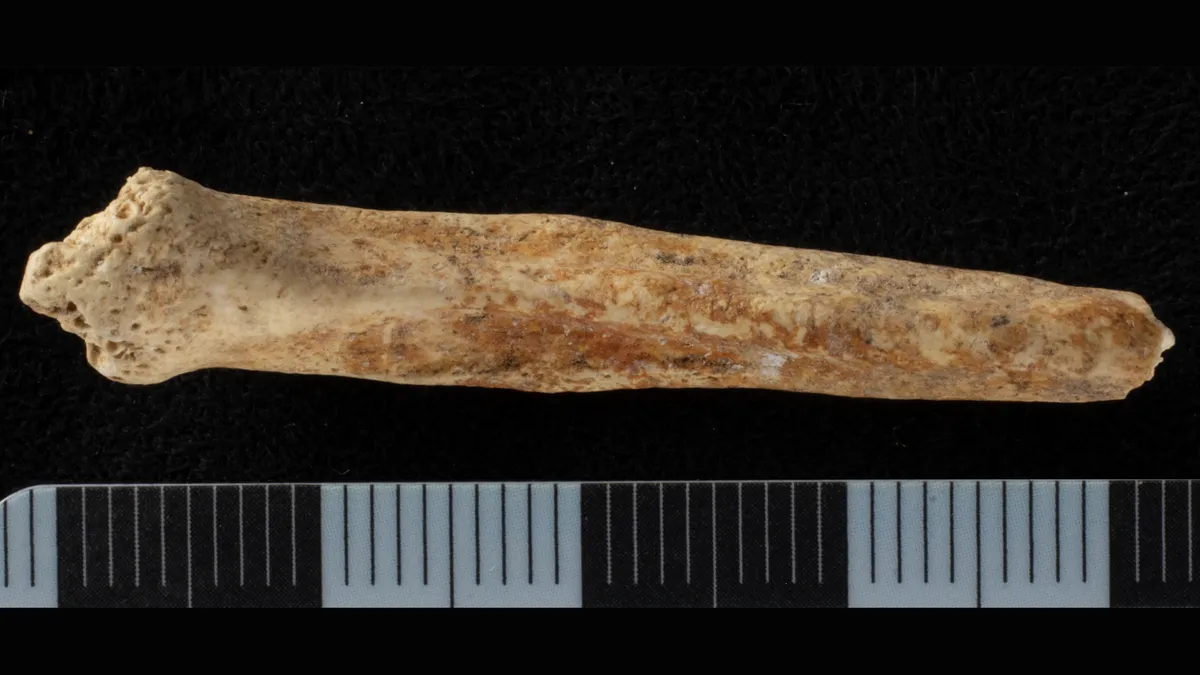A Unique Artifact Unearthed in Surrey
Archaeologists in Surrey, England, have uncovered an extraordinary artifact from the Romano-British period—a painted dog penis bone, or baculum, believed to have been used in fertility rituals. This discovery, made in a Roman quarry shaft, is the first of its kind, providing new insights into ancient ritual practices.
The Ritual Shaft and Its Findings
Since its initial excavation in 2015, the 13-foot-deep limestone shaft in Ewell, Surrey, has yielded numerous prehistoric human and animal remains. Archaeologists suggest that such deep pits and wells were intentionally filled with materials indicative of votive or ritualistic offerings. Among the discoveries were about 300 domestic animal remains, including pigs, horses, cows, sheep, and dogs. Notably, most of these dogs were small breeds such as terriers or corgis rather than the more common hunting or herding dogs of the time.
Adding to the intrigue, some disarticulated human skeletons were also recovered from the shaft, which appears to have been filled over a relatively short span of 50 years.
The Painted Dog Baculum: A Symbol of Fertility?
A recent study, published on December 25 in the Oxford Journal of Archaeology, analyzed this rare artifact. Bioarchaeologist Ellen Green, the study’s author, examined the baculum and found traces of red ochre on its surface. Through X-ray fluorescence analysis, Green determined that the red pigment, composed of iron oxide, was not naturally present at the site but had been intentionally applied before the bone was placed in the shaft.
This evidence suggests that the baculum was deliberately painted, possibly as a good luck charm linked to fertility rites. The symbolic significance of the phallic-shaped object aligns with broader cultural and religious practices of the time.
Newborn Animal Remains: A Ceremonial Significance
Another remarkable aspect of the site was the high concentration of newborn and perinatal animal remains. The presence of numerous fetal and neonatal skeletons, including 14 foals, indicates intentional breeding in the area, possibly for ceremonial purposes. Given the symbolic importance of animals in Roman Britain, this finding further supports the theory that the site had ritualistic significance.
Symbolism of Horses and Dogs in Roman Britain
In Roman Britain, certain animals carried deep spiritual meanings. Dogs were often associated with fertility, protection, and healing, frequently linked to mother goddesses who represented renewal and abundance. Horses, on the other hand, were connected to Epona, a goddess of fertility and the afterlife. The presence of both animals at the site suggests a broader cultural and religious context surrounding the mysterious shaft.
A Glimpse into the Spiritual Beliefs of Roman Britons
While the exact purpose of the painted baculum remains unclear, it provides a fascinating window into the spiritual and ritual practices of Roman Britons. This discovery continues to deepen our understanding of how fertility, life, and the afterlife were interwoven into their beliefs and customs.







